Cooperation between melanoma cell states promotes metastasis through heterotypic cluster formation
- PMID: 34529939
- PMCID: PMC8551056
- DOI: 10.1016/j.devcel.2021.08.018
Cooperation between melanoma cell states promotes metastasis through heterotypic cluster formation
Abstract
Melanomas can have multiple coexisting cell states, including proliferative (PRO) versus invasive (INV) subpopulations that represent a "go or grow" trade-off; however, how these populations interact is poorly understood. Using a combination of zebrafish modeling and analysis of patient samples, we show that INV and PRO cells form spatially structured heterotypic clusters and cooperate in the seeding of metastasis, maintaining cell state heterogeneity. INV cells adhere tightly to each other and form clusters with a rim of PRO cells. Intravital imaging demonstrated cooperation in which INV cells facilitate dissemination of less metastatic PRO cells. We identified the TFAP2 neural crest transcription factor as a master regulator of clustering and PRO/INV states. Isolation of clusters from patients with metastatic melanoma revealed a subset with heterotypic PRO-INV clusters. Our data suggest a framework for the co-existence of these two divergent cell populations, in which heterotypic clusters promote metastasis via cell-cell cooperation.
Keywords: TFAP2; circulating tumor cell cluster; cluster; cooperation; melanoma; metastasis; zebrafish.
Copyright © 2021 Elsevier Inc. All rights reserved.
Conflict of interest statement
Declaration of interests M.R.M. receives research funding from GRAIL. D.J.A. is a paid consultant for Microbiotica and receives researching funding from Astra Zeneca and OpenTargets. M.P.L. receives research funding from Roche and Novartis. N.A. is a paid consultant for companies with an interest in liquid biopsy. R.M.W. is a paid consultant to N-of-One Therapeutics, a subsidiary of Qiagen. R.M.W. is on the Scientific Advisory Board of Consano but receives no income for this. R.M.W. receives royalty payments for the use of the casper line from Carolina Biologicals.
Figures
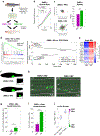
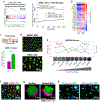

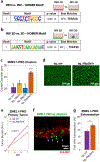
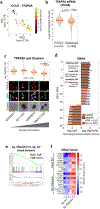

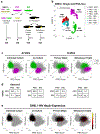
Comment in
-
Working together: Heterotypic clusters and collective cell migration in melanoma metastasis.Dev Cell. 2021 Oct 25;56(20):2783-2784. doi: 10.1016/j.devcel.2021.10.003. Dev Cell. 2021. PMID: 34699785
References
-
- Ågren JA, Davies NG, and Foster KR (2019). Enforcement is central to the evolution of cooperation. Nature Ecology & Evolution 3, 1018–1029. - PubMed
Publication types
MeSH terms
Grants and funding
- U54 CA137788/CA/NCI NIH HHS/United States
- R01 CA083115/CA/NCI NIH HHS/United States
- C8216/A6129/CRUK_/Cancer Research UK/United Kingdom
- F30 CA220954/CA/NCI NIH HHS/United States
- P30 CA008748/CA/NCI NIH HHS/United States
- 8466/CRUK_/Cancer Research UK/United Kingdom
- C588/A19167/CRUK_/Cancer Research UK/United Kingdom
- K00 CA223016/CA/NCI NIH HHS/United States
- R01 AR062547/AR/NIAMS NIH HHS/United States
- R01 CA229215/CA/NCI NIH HHS/United States
- DP2 CA186572/CA/NCI NIH HHS/United States
- MR/M019012/1/MRC_/Medical Research Council/United Kingdom
- C7535/A6408/CRUK_/Cancer Research UK/United Kingdom
- C2195/A8466/CRUK_/Cancer Research UK/United Kingdom
- U54 CA132378/CA/NCI NIH HHS/United States
- C588/A10721/CRUK_/Cancer Research UK/United Kingdom
- MR/V000292/1/MRC_/Medical Research Council/United Kingdom
- T32 GM007739/GM/NIGMS NIH HHS/United States
LinkOut - more resources
Full Text Sources
Medical
Molecular Biology Databases

